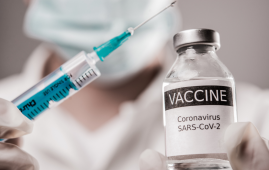

Research reported in the April issue of the Journal of Nuclear Medicine suggests that a novel nuclear medicine treatment can successfully treat human non-Hodgkin lymphoma in an animal model. When mice were injected with cancer cells, a single dose of the radioimmunotherapy [177Lu]Lu-ofatumumab was found to rapidly eradicate tumor cells and prolong the life of the mice for more than 221 days (the trial endpoint), as opposed to less than 60 days for other treatments and only 19 days in untreated control mice.
Typical blood cancer is non-Hodgkin lymphoma. In 2023, the American Cancer Society predicts that there will be more than 80,500 new cases and 20,100 fatalities in the country. The standard of care for many non-Hodgkin’s lymphoma patients involves chemotherapy and immunotherapy targeting the CD20 protein, which is highly expressed in most non-Hodgkin’s lymphoma cells.
“Although this chemotherapy with immunotherapy combination is usually initially effective, many patients don’t respond or relapse, so we need improved therapies,” said Richard L. Wahl, MD, the Elizabeth E. Mallinckrodt Professor and director of Mallinckrodt Institute of Radiology at Washington University School of Medicine in St. Louis, Missouri.
Ofatumumab, a freshly created anti-CD20 completely human antibody, was tagged in the study with 177Lu, a commonly used therapeutic radioisotope that can eradicate cancer cells. After that, they established the [177Lu]Lu-ofatumumab’s in vitro properties, calculated human dosimetry and assessed the therapeutic efficacy of the drug for non-Hodgkin’s lymphoma in a mouse model.
The preclinical therapy experiment produced the study’s most important finding. After receiving a human B cell lymphoma injection, mice were given one of four different treatments: no treatment, unlabeled ofatumumab, 8.51 MBq of [177Lu]Lu-IgG, or either 0.74 MBq or 8.51 MBq of [177Lu]Lu-ofatumumab. With a median life of more than 221 days, 8.51 MBq of [177Lu]Lu-ofatumumab had the best effects, essentially curing the mice. The median survival of untreated, [177Lu]Lu-IgG, [177Lu]Lu-ofatumumab, and 0.74 MBq of [177Lu]Lu-ofatumumab-treated mice was 19, 46, 25, and 59 days, respectively.
“What’s more, in mice treated with 8.51 MBq of [177Lu]Lu-ofatumumab, detectable tumors were eliminated completely within two days. Mice treated with the other therapies or left untreated, on the other hand, continued to show tumor cells present,” Wahl explained.
Researchers were able to produce [177Lu]Lu-ofatumumab with high yield and high purity. It showed favorable in vitro characteristics and dosimetry estimates that support the feasibility of human translation.
“The excellent therapeutic results in this animal model of human B cell lymphoma suggest that this curative treatment should be tested in humans with non-Hodgkin’s lymphoma,” noted Wahl. “If testing is successful in humans, this would represent an excellent new treatment option for patients with this disease.”
more recommended stories
 Immunosuppression Driver Found in Glioblastoma
Immunosuppression Driver Found in GlioblastomaFilippo Veglia, Ph.D., an assistant professor.
 Early Brain Development: Gene Control Atlas Unveiled
Early Brain Development: Gene Control Atlas UnveiledAn atlas of the brain’s early.
 PLS Riskier in ABO Mismatched Lung Transplants
PLS Riskier in ABO Mismatched Lung TransplantsPassenger lymphocyte syndrome (PLS) is a.
 Lysosomal Function in Parkinson’s Disease Risk
Lysosomal Function in Parkinson’s Disease RiskThe genetic traits that affect the.
 Omega-6 Fatty Acid Role in Bipolar Disorder
Omega-6 Fatty Acid Role in Bipolar DisorderHigher concentrations of arachidonic acid, an.
 Transplant Drug Shows Promise in Slowing Alzheimer’s in Seizure Patients
Transplant Drug Shows Promise in Slowing Alzheimer’s in Seizure PatientsProtein imbalances, which heighten the excitability.
 Fentanyl Inhalation: Brain Damage Risks
Fentanyl Inhalation: Brain Damage RisksAfter treating a middle-aged man who.
 Enhanced Immune Response in New COVID-19 Vaccines
Enhanced Immune Response in New COVID-19 VaccinesAn improved vaccination offers an enhanced.
 Bioresorbable Wireless Sensor for Early Stomach Leakage Detection
Bioresorbable Wireless Sensor for Early Stomach Leakage DetectionIn a recent publication in Scientific.
 Neurocardiac Connectivity in Depression Treatment
Neurocardiac Connectivity in Depression TreatmentHeart rate deceleration and sadness may.

Leave a Comment